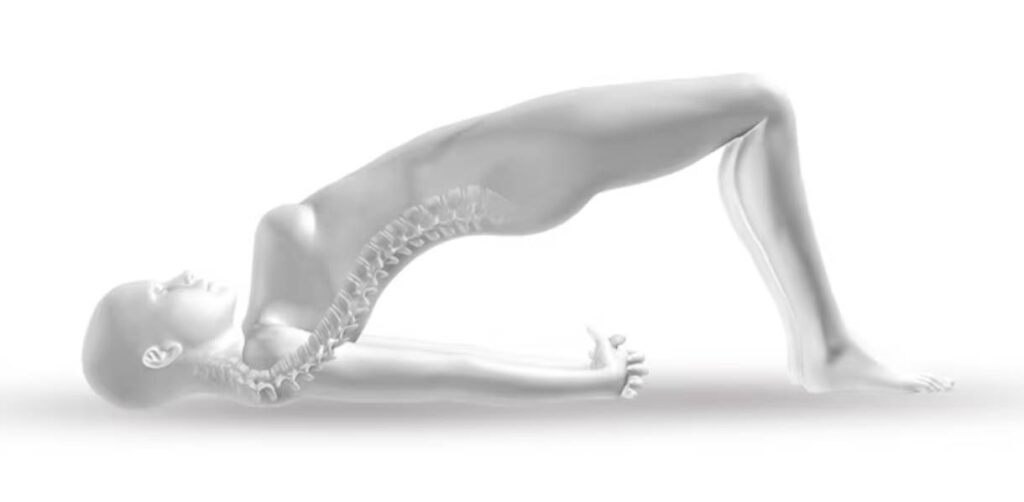Herniated Disc Recovery Timeline: What to Expect Week by Week
One of the most common questions people ask after being diagnosed with a herniated disc is:
“How long will recovery take?”
The truth is, recovery depends on the severity of the herniation, your overall health, and how well you follow treatment and lifestyle adjustments. While every individual heals at a different pace, it helps to understand the general recovery timeline and what to expect week by week.
Week 1–2: Pain Management and Rest
- Primary Goal: Reduce inflammation and pain.
- What to Expect:
- Sharp lower back pain or sciatica may still be present.
- Movement may feel limited.
- Recommended Actions:
- Rest (but not complete bed rest; light walking is better).
- Use ice or heat therapy for pain relief.
- Begin gentle stretches like Child’s Pose if approved by your doctor.
- Avoid: Heavy lifting, bending, twisting movements.
Week 3–4: Gentle Movement and Mobility

- Primary Goal: Start restoring mobility without aggravating the disc.
- What to Expect:
- Pain may decrease, but stiffness remains.
- You might notice improved walking tolerance.
- Recommended Actions:
- Continue gentle stretches (Cat-Cow, Hamstring Stretch).
- Add light core engagement (Pelvic Tilt).
- Focus on posture during daily activities.
- Avoid: High-impact cardio or heavy exercise.
Week 5–6: Safe Strengthening
- Primary Goal: Rebuild stability and strength.
- What to Expect:
- Pain is less frequent but may flare up with poor posture.
- Increased energy for light activities.
- Recommended Actions:
- Begin safe home workouts like Bird-Dog and Partial Crunches.
- Introduce short walks or gentle stationary cycling.
- Continue sleeping in supportive positions.
- Avoid: Long hours of sitting without breaks.
Week 7–8: Returning to Normal Activities

- Primary Goal: Increase independence and resume daily tasks.
- What to Expect:
- Most people can return to light work or modified duties.
- Significant reduction in nerve pain.
- Recommended Actions:
- Gradually increase exercise intensity (Modified Plank, Wall Sits).
- Focus on nutrition—include collagen, omega-3, and anti-inflammatory foods.
- Maintain consistent sleep schedule for recovery.
- Avoid: Sudden twisting, lifting heavy objects without support.
Month 3–6: Long-Term Healing
- Primary Goal: Prevent recurrence and strengthen spine health.
- What to Expect:
- Many people feel almost normal, though occasional stiffness is possible.
- Confidence in daily movement improves.
- Recommended Actions:
- Combine stretching, workouts, and nutrition for full recovery.
- Practice good ergonomics at work and home.
- Consider yoga or Pilates for long-term core stability.
- Avoid: Returning to high-impact sports too quickly.

Beyond 6 Months: Full Recovery & Maintenance
- Primary Goal: Maintain spine health and avoid future injuries.
- What to Expect:
- Most patients achieve full recovery within 6–12 months.
- Chronic pain risk decreases with consistent self-care.
- Recommended Actions:
- Continue safe workouts (planks, glute bridges, back-friendly cardio).
- Maintain a healthy weight to reduce spinal pressure.
- Regularly check posture, especially during work and driving.
Factors That Influence Recovery Time
- Age: Younger individuals often heal faster.
- Severity of herniation: Mild bulges heal quicker than severe ruptures.
- Lifestyle: Diet, exercise, and sleep quality directly affect healing.
- Treatment compliance: Following doctor and physical therapist advice speeds recovery.
Final Thoughts
The recovery journey from a herniated disc is gradual and requires patience. While many people see improvements within 6–8 weeks, full healing may take several months. By following a structured approach—managing pain, gently restoring movement, strengthening the core, improving sleep, and eating a spine-friendly diet—you can significantly shorten recovery time and prevent future issues.
Stay consistent, listen to your body, and remember: recovery is not a race, but a step-by-step process toward lasting spinal health.
